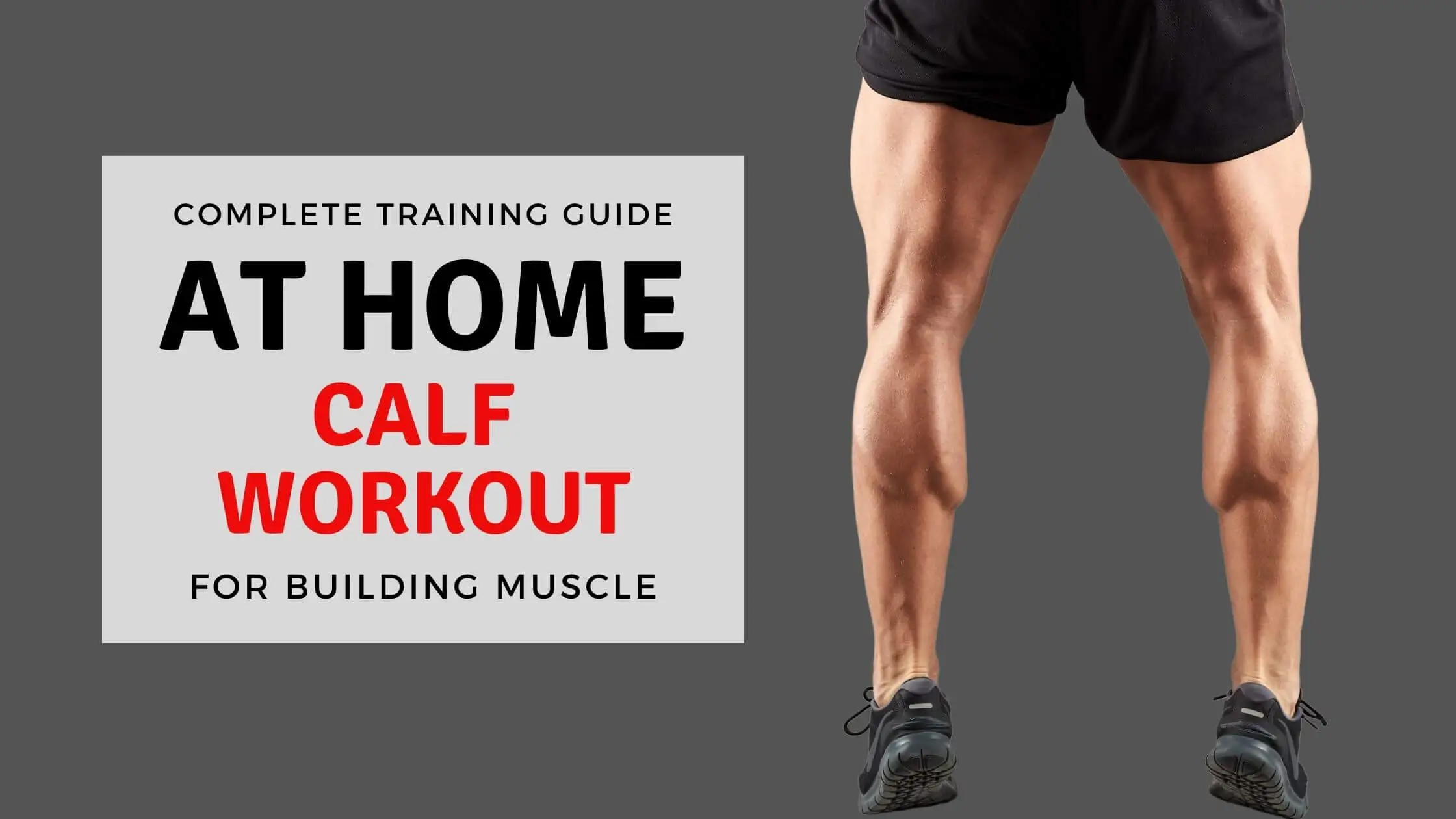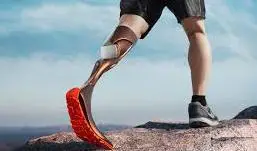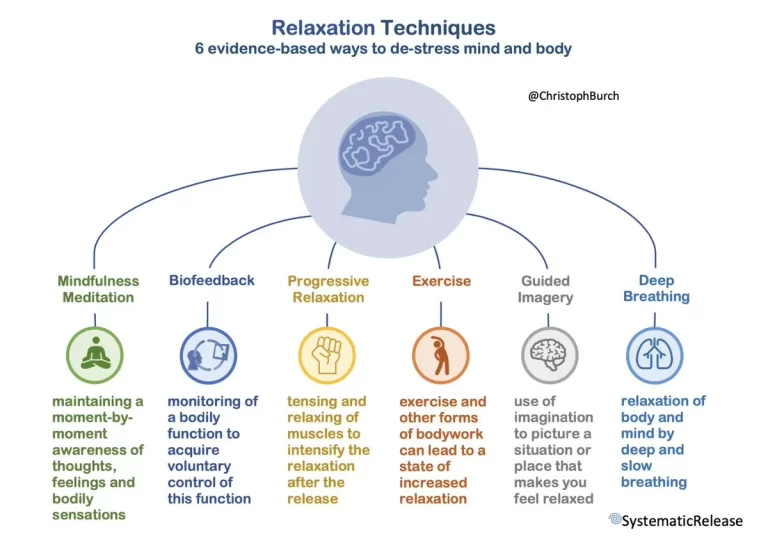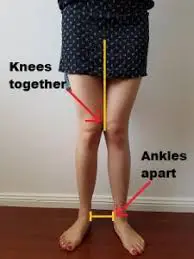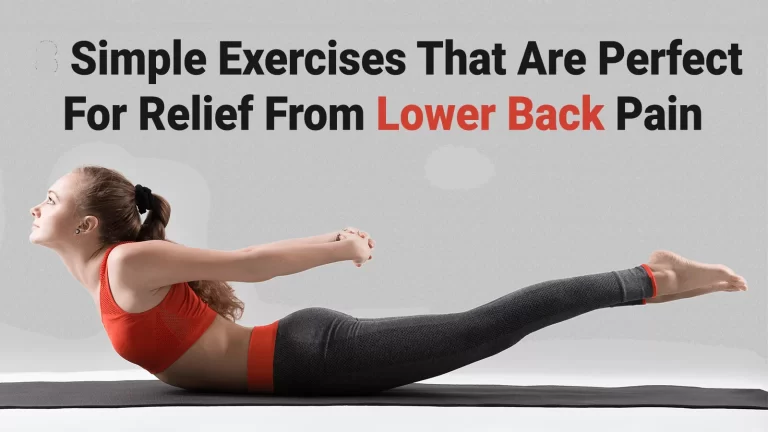Simple Calf Exercises You Can Do at Home
Your calves are essential for walking, running, jumping any kind of movement that affects your legs. And the more powerful your calves, the better you will perform in other areas where your legs are the primary movers like in athletics.
It does not take any costly equipment or gym memberships to make the most of your muscles, either. We will describe to you how to exercise your calf muscles at home, plus how to incorporate these exercises into your training for the best outcomes.
Introduction
The calve muscles push you forward when you running or walking, allow you to jump, allow you to rotate your ankles, keep your knees stable, and turn your feet. So if you are skipping calf strength training, you are cutting yourself off at the knee.
Your calf muscles are responsible for helping a lot of the load from your lower limb, and they push you forward when doing exercises like walking and running. The more powerful your calves are, the faster you’ll be able to run, the higher you will be able to jump, and the less likely you will be to get hurt while working out.
What are calf muscles, and what function do they be used for?
The muscles that create the calves are the gastrocnemius and soleus. Each of them plays a vital role in walking, running, jumping, and keeping good posture.
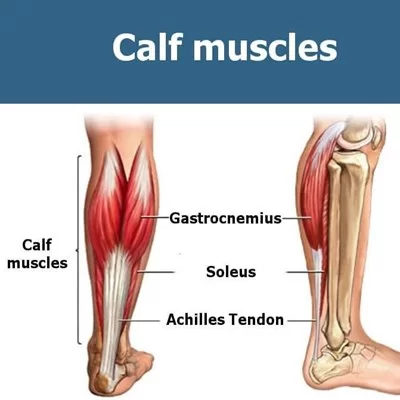
Gastrocnemius
Gastrocnemius comprises the bulk of the calf and is therefore the most visual. It attaches from the femur aka the leg bone down to the ankle by way of the Achilles tendon.
Having powerful gastrocnemius muscles not only gives the legs a full-figured appearance, it also helps propel you forward. The gastrocnemius is the primary muscle that’s activated when you raise your heel off the floor, so if it is strong and healthy you can move faster, and easily.
Because gastrocnemius intersects two joints the knee and the ankle it is more sustained to strain and injury than muscles that only cross one joint. Think of it this way: Because the gastrocnemius has numerous jobs in everyday actions like walking stabilizing the knee and flexing the ankle it has more chances for injury.
Soleus
The soleus muscle is also away from the skin, under the gastrocnemius muscles, so you can’t see it. But that does not mean this muscle is not important! It helps the gastrocnemius flex the ankle and maintains the stability of the ankle joint. That means that the soleus is important for helping you move and stabilizing the lower leg in a way that supports good posture.
Why is strength training your calf muscles important?
When most individuals think of leg strength, they tend to think about the bigger muscles in the thighs quadriceps, and hamstrings. Those muscles are the main players in both fitness and daily life, but they can’t do much without the calves.
Top 10 Benefits of Calf Muscle Strengthening Exercises
- Targeted Calf Development.
- Improved Ankle Strength and Stability.
- Enhanced Athletic Performance.
- Better Balance and Coordination.
- Increased Jumping Power.
- Reduced Risk of Lower Leg Injuries.
- Improved Posture.
- Versatility and Progression.
Powerful, sculpted calves and ankles are not only aesthetically pleasing but also important for athletic performance, balance, and trauma prevention. Calf exercises are a simple, yet useful exercise that can help you achieve well-defined lower legs while showing numerous other benefits.
Targeted Calf Development
Calf exercises mainly target the gastrocnemius and soleus muscles, which construct up the bulk of the calf. By regularly doing calf raises, you can promote muscle growth in these areas, assisting to shape and determine your calves for a more toned and sculpted build.
Improved Ankle Strength and Stability
Calf exercises also help to strengthen the muscles, tendons, and ligaments surrounding the ankle joint. This enhanced strength and stability can decrease the risk of ankle injuries, such as sprains and strains, while also enhancing overall balance and stability during athletic movements and daily tasks.
Enhanced Athletic Performance
Strong calf and ankles are important for many athletic movements, including running, jumping, and changing direction. Including calf raises in your fitness routine can help enhance your performance in different sports and activities that need power, agility, and balance.
Better Balance and Coordination
Performing calf exercises challenges your balance and coordination, as you must hold your body’s stability while raising and dropping your heels. Routine practicing this exercise can help to improve your overall balance and coordination, which can be useful for sports routine and daily life.
Increased Jumping Power
Calf exercises help to develop explosive power in the calf muscles, which can translate to improved jumping ability. By strengthening the calf muscles and improving their capacity for force generation, you can improve your vertical jump and overall explosive power in sports and exercises that need jumping.
Reduced Risk of Lower Leg Injuries
Strong calve muscles can help to absorb the effect forces induced during exercises like running and jumping, decreasing the stress placed on the lower leg and lowering the chance of suffering from problems including Achilles tendonitis, stress fractures, and shin splints. By incorporating calf raises into your workout routine, you can help protect your lower legs from injury and ensure long-term health and performance.
Improved Posture
Strong calf muscles can contribute to achieving overall posture better, as they help to hold the alignment of your lower legs and feet. By strengthening these areas, you can enhance proper body alignment and decrease the risk of postural problems that can contribute to discomfort and injury.
Versatility and Progression
Calf lifts can be easily modified to suit your fitness level and objectives, making them appropriate for individuals of all fitness levels. You can increase the intensity and challenge of the activity by adding weight, performing single-leg interpretations, or incorporating balance features such as a Bosu ball or balance board. This adaptability allows for continued advancement as you become stronger and more fit.
No Equipment Required
Calf exercise requires no equipment, making it an ideal exercise for people with limited access to gym facilities or those looking to save money on fitness tools. You can complete calf raises virtually anywhere, making it easy to incorporate this useful lower-leg exercise into your fitness routine.
Easy to Incorporate into Your Routine
Calf exercises can be smoothly added to your existing training routine, as they can act as a standalone exercise or as part of a larger lower-body training. You can also perform calf raises during your daily movements, such as while brushing your teeth or waiting in line, making it simple to work on calf strength and purpose throughout the day.
Different exercises to strengthen calves at home:
Without the use of any additional equipment, I’ve put together some of the greatest calf-targeting workouts you can perform at home. If you’re just beginning to concentrate on this muscle area, remember to go slowly and increase your repetitions over time. You can incorporate a few of these routines into your current routine or design a calf-focused circuit with your favorites.
Calf raises

- Start in a standing position with your feet hip-width apart and your core muscle should be engaged.
- contract your calf muscles, gradually lifting your body, lifting your heels until you are on your toes.
- Make sure to stand tall and straight, and then lower your heels back to the ground with control. Repeat.
Lunges
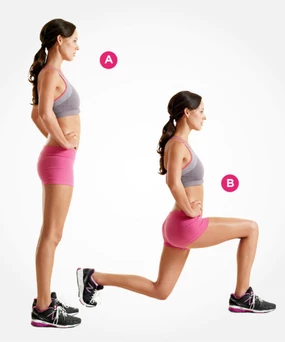
- Lunges engage the calves in numerous ways. The gastrocnemius and soleus muscles both contribute to the stabilization of the knees and ankles, respectively. If you like to level up the calf action in your lunges, try lifting the heel of the front foot.
- To start this exercise you have to Stand in a split stance with the right foot roughly 2 to 4 feet in front of the left foot. Your trunk is straight, the shoulders are back and down, your core is engaged, and your hands are resting on your hips.
- flex the knees and lower your body until the back knee is a few inches from the ground. At the bottom of the movement, the front thigh is parallel to the floor, the back knee points toward the floor, and your weight is evenly distributed between both legs.
- Push back up to the initial position, keeping your weight on the heel of the front foot.
Squats
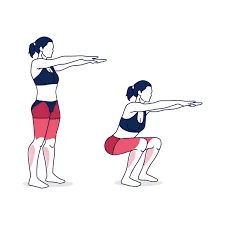
- You can make any squatting into a great calf exercise by raising the heels called a plie squat. You can alternate which heel you raise or do both at the same time if you are feeling balanced.
- You have to stand with your feet shoulder-width apart in front of the wall.
- Squat while maintaining a wall-facing posture.
- Once the thighs are parallel to the floor, grab the position for several seconds.
- Wall squats are a good choice for people looking to build muscle endurance in their legs. This version may be suitable for people new to squats or who are prone to knee pain because leaning against the wall can also relieve some of the pressure from the knees.
Jumping
- Anything that affects jumping strengthens your calves and you can add a jumping, or plyometric, element to many workout moves, including squats and lunges.
- You can also just hop about or jump rope. Jumping is a high-impact workout, so use caution.
Running
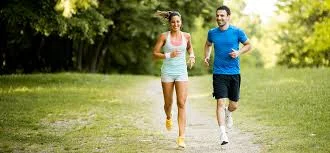
- When you run, your calf muscles lift your feet off the ground and help you move forward.
- To improve the calf-strengthening component of your runs, run on an incline a.k.a. uphill.
Walking
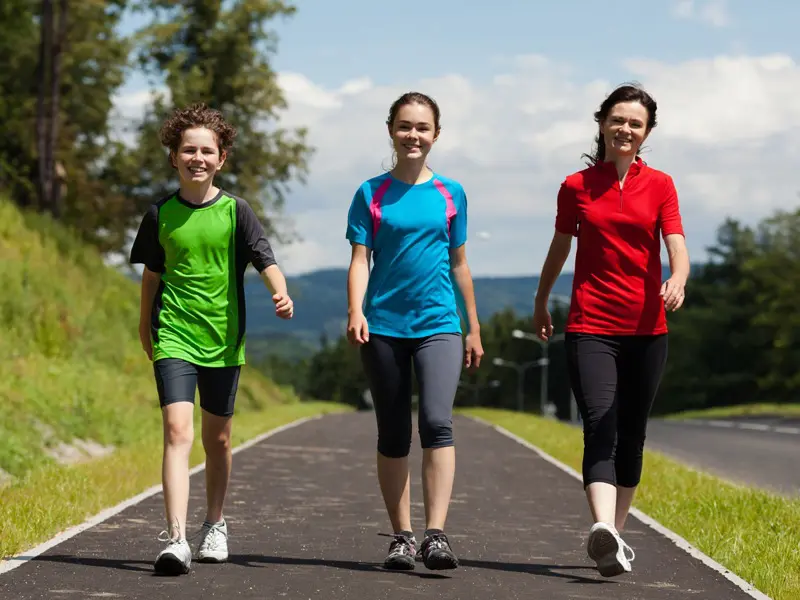
- The calf muscles help you move forward when you walk, just like when you run.
- Walk uphill to boost the calf workout you receive from walking. Try removing your hands from the handrails when on a treadmill to make your calf muscles work harder at stabilizing you.
Biking or indoor cycling
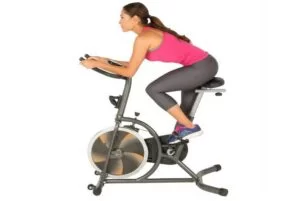
- When biking or cycling indoors, the thighs are primarily responsible for propulsion, but the calves play a significant stabilizing role.
- Cycling up steeper hills or turning up the resistance on your spin bike may force your calves to work harder if you want to focus more on them, as well as shifting to a more upright position.
Jumping jacks
- Begin by standing upright with your legs closed and your arms by your sides.
- With slightly knee flexed, jump into the air. As you are jumping, extend your legs shoulder-width apart, and swing your arms laterally up and over your head. now, return to the starting position and do it again.
Butt kickers
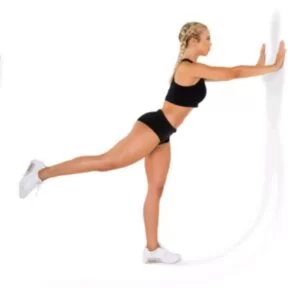
- Start by standing with your feet hip-width apart. You will be kicking your feet behind you to try your bottom; this will help with hip flexor mobility and can also reduce the quadriceps. Now, kick your right foot backward toward your right butt, and then kick your left foot back toward your left butt.
- The faster you go, the more useful you may feel like you are running in place, so make sure you focus the training on kicking your feet toward your glute with every step.
Jump squat
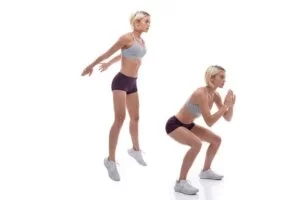
- Jump squatting is a power move that targets your whole lower body and core.
- With your feet hip-distance apart, lower into a squatting position. Make sure your back is firm and straight, and that your knees are positioned below your toes.
- Now, jump straight up and move your arms overhead.
- Softly return to your initial position and repeat.
Raised heel squat
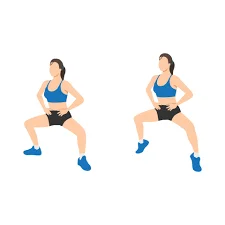
- Start this exercise by standing with your feet wide and your toes pointed slightly outward. With a strong back, contract your core and glutes as you lower into a squatting position.
- Then, push down through your toes to come up and lift your heels.
- Keep the weight on your toes and you press up to stand.
- Gradually lower your heels back to the floor and repeat.
Mountain climbers
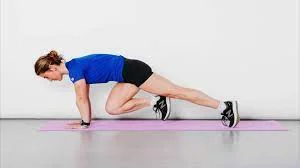
- Take a plank position, maintaining your back straight, your hips low and your core contracted. Bring your left knee under your chest toward your left elbow.
- Return your left leg to the plank position; bring your right leg under your chest toward your right elbow. Repeat while alternating your legs, maintaining a constant pace.
- Remember to breathe and focus on engaging your abs, glutes, and hamstrings.
Outward calf raise
- To begin this exercise Stand with your feet shoulder-width apart, pointing your toes slightly outward. engage your core to keep yourself stable, and slowly raise your heels off the ground.
- Make sure you keep your knees extended but soft throughout this movement to control knee injury or pain. Keep briefly at the top, and gradually lower your heels back to the base. Repeat.
Inward calf raise
- Stand with your feet shoulder-width apart, this exercise can point your toes slightly inward. contract your core to keep yourself stable, and slowly raise your heels off the floor.
- Make sure you keep your knees extended but soft throughout this movement to prevent knee injury or pain. Keep briefly at the top, and slowly lower your heels back to the ground. Repeat.
Isometric calf raise
- For this movement, you begin by performing a traditional calf raise. With a tight core, press your calves as you lift your heels off the floor. Pause when you’ve reached the movement’s highest point.
- Maintain here for a deep breath followed by a count of 3, and then lower back to the initial position on your breath out. Repeat.
Fast feet
- For this exercise, we will begin in an athletic, half-squat stance.
- Hold your feet shoulder-width apart, your hips low, and your knees relaxed/slightly flexed.
- Pushing through the balls of your feet, run in position as quickly as you can, swinging your arms forward and back for stabilization and extra speed.
Reverse lunge

- In a standing position with feet hip-distance apart, take a large step backward with your left foot. Next, drive your right hip back as you lower your left knee to the ground without touching it. Then, drive off the left foot to return to the initial position.
- Repeat, this time stepping backward with the right foot. Continue alternating legs, completing ten repetitions per leg.
Seated calf raise
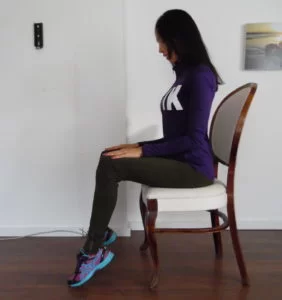
- To do Sit on a chair so your feet are comfortably flat on the ground.
- Lift the heels of your feet as high as you can, coming up onto your toes, then slowly return to the initial position. Repeat for ten repetitions.
Walking lunge
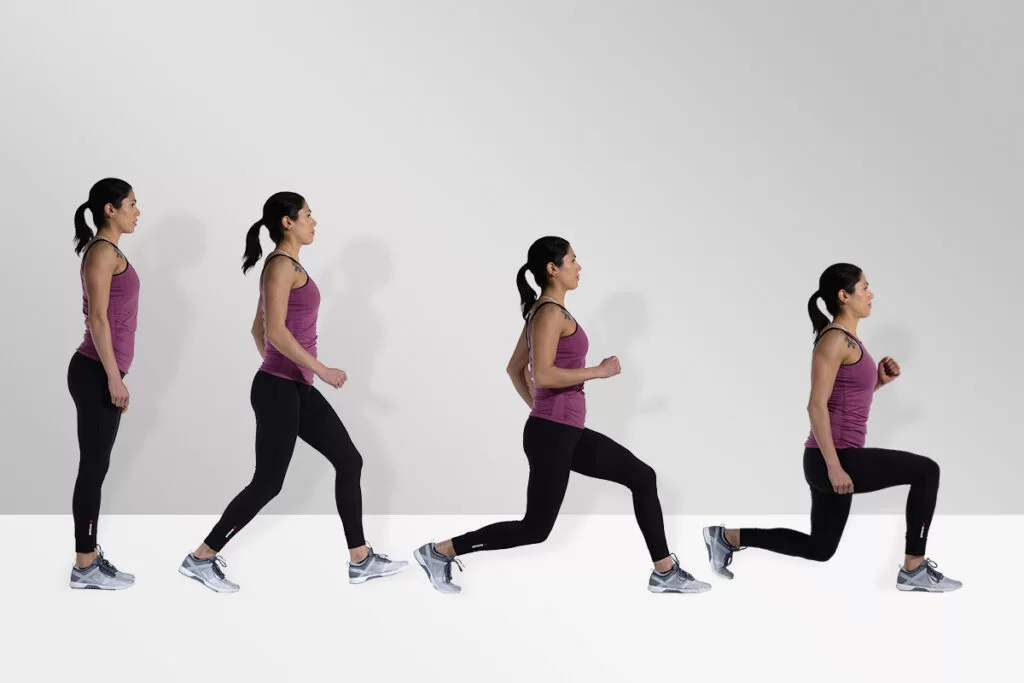
- Begin standing with your feet hip-distance apart. Holding an upright trunk with your core engaged, take an extended step forward with your left foot.
- Contract your core as you lower down into a lunge position. Flexing both knees, lower your back knee to the floor, stopping before touching it.
- With the weight on your left foot, push back up to a standing position. Repeat on the other leg.
- Complete ten repetitions per leg.
Tiptoe walk
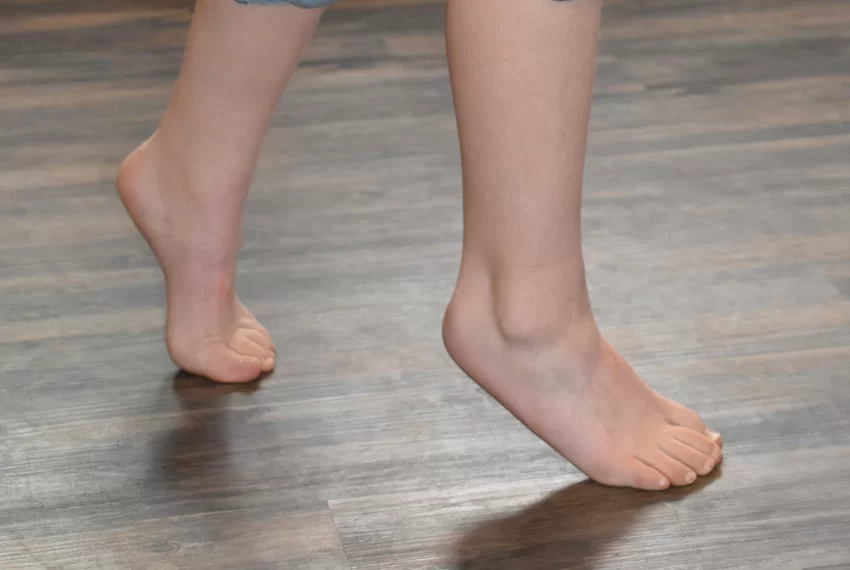
- This training will help to enhance overall balance and strength in the calves.
- With both heels off the ground, raise to your toes. Walk forward in short steps.
- Continue for thirty seconds. Rest, then repeat 2 more times.
Lunge jumps
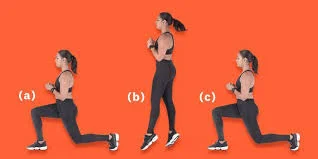
- From a standing position, widen your stance with one foot in front of the other as if you are going to enter a lunge.
- As you sink into the lunge, contract your core muscles as you explode upward. When you land, quickly switch feet to adjust your lunge position.
- Do not lock your knees.
- Repeat for ten repetitions or 5 repetitions on each leg.
Seal jumps
- A variation of a jumping jack begins in the jumping jack position. Your hands will stretch in front of you when you jump rather than going over your head.
- Maintain your hands at eye level, palms facing in the direction that they join. Return to the initial position.
- Repeat for ten repetitions.
High knees
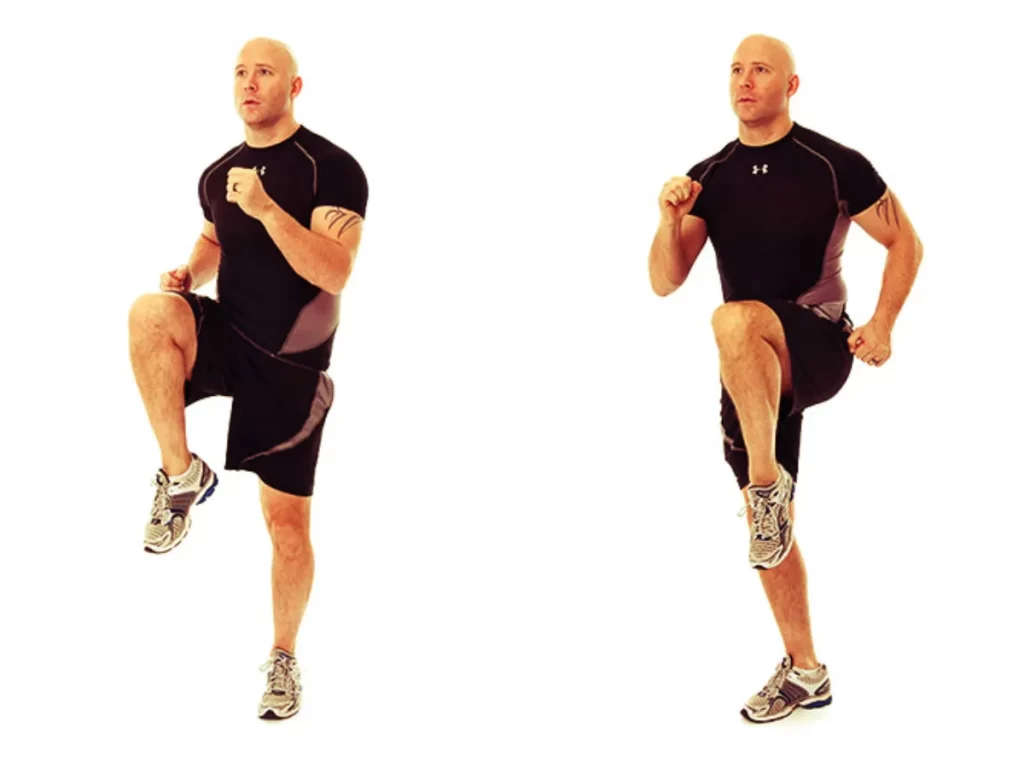
- Begin standing with feet hip-width apart and arms by your sides.
- Drive one knee up to a ninety-degree angle while engaging your core; pump the opposite arm up to shoulder height. Fast switch legs to repeat the motion.
- Keep moving quickly and engaging your calf by staying on the balls of your feet. Repeat for twenty repetitions, ten on both legs.
Calf rocks
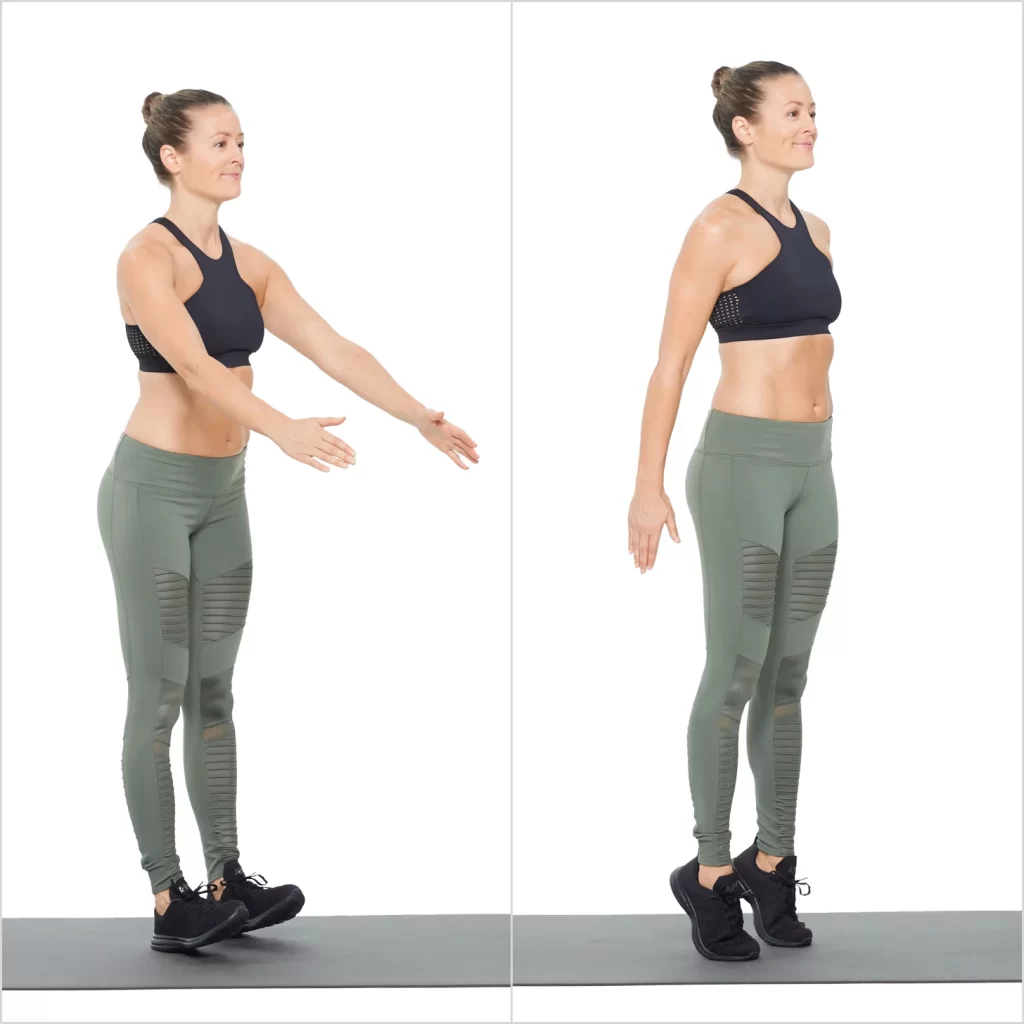
- Stand with feet shoulder-width apart. Before moving your weight to your heels and lifting your toes off the ground, tighten your abdomen.
- Rock forward and lift your heels off the ground as you stand up straight. This is one repetition. Do this for 10 more repetitions.
Donkey calf raises
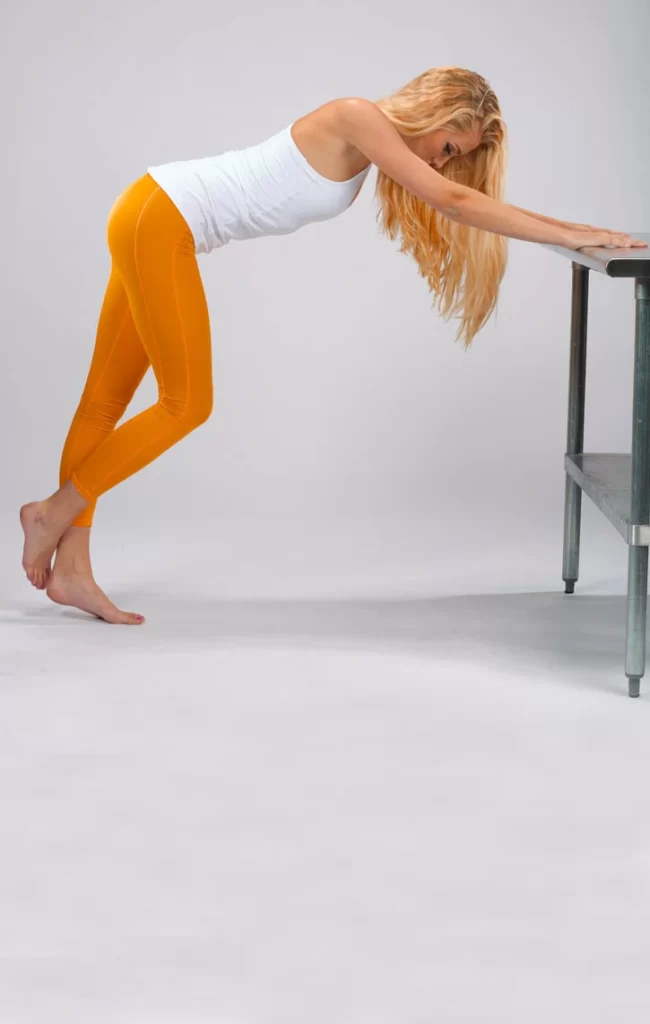
- To perform this exercise, you will require a bench or some other steady object and a partner–but no equipment is needed. Bend over and grab the sturdy object or bench with your hands. Make sure your knees are not locked and that your toes are looking forward. The weightier the person, the harder the training.
- Pushing up with the balls of your feet will help you raise your heels off the ground. Repeat after pausing and bringing your heels back down to the floor.
Do box jumps
- Your calf muscles can become more robust and supple by performing box jumps. When you practice this exercise regularly, your muscles are trained to respond and contract quickly. This not only builds muscle but allows you to jump and jump in different directions much more quickly.
- Get a box that is high enough for you to get training but not so high that you might strain or hurt yourself. You may be required to build up from a lower-level box to a higher-level one over time.
- Stand in front of the box. Jump onto the box lifting your balls of feet, landing on the balls and toes of your feet. Repeat by leaping back down to the ground.
- Do this 8 -10 times per set. The more frequently you perform this, the easier it will get, similar to calf raises. At that point, it will be essential to challenge yourself with more reps.
- It is not a good idea to maintain weights or anything else when you do box jumps so you can still catch yourself if you fall.
Jump rope
- When you utilize a jump rope, your calf is continuously engaged. This assists in building muscle, provides a better cardiovascular workout, and makes you quicker on your feet as well. Do this practice regularly, and see why you don’t require weight equipment to tone your calf muscles.
- To jump rope, save your hands out to your sides, and make small, fast circles with your wrists to spin the rope. Jump an inch or so off the floor over the rope as it moves under your feet. At least three times per week, jump rope. Begin out doing just one set for two minutes and then advance to several sets. At least 15 minutes per session should be your goal.
- Run on your toes in the same area in its place if you don’t have a jump rope or find this exercise challenging.
Create a calf workout schedule:
- You should exercise your calves many times per week, giving them time to recover and gain muscle mass on days off from exercise. Follow a beginner’s workout regimen if you have never worked your calves previously. If you have been working on your calves for a while, consider an intermediate or advanced workout schedule. [
- Perform double-leg calf raises for two sets of 12 repetitions as a beginner’s exercise.
- Perform single-leg calf raises for three sets of eight to twelve repetitions after performing double-leg calf raises for three sets of eight to twelve repetitions.
- Do box jumps for 1 set of 5 repetitions, double-leg calf raises for 2 sets of 8–10 repetitions, single-leg calf raises, or jump squats for 2 sets of 8–10 repetitions for an advanced workout.
- When your sets are complete, your muscles should be sore and strained. Your muscles are tearing and being replaced with new, more powerful, and bigger ones.
- Try performing a few more sets throughout each calf workout session.
What not to Do for Calf Workouts?
Numerous gym-goers and athletes tend to prepare their calves exclusively with ultra-high rep sets and poor practice. Muscles act like rubber bands; when stretched or lengthened vigorously, elastic energy contained within them snaps the muscle back to its original length. In the case of calf training for strength and hypertrophy, bouncing up and down with a constrained range of motion primarily recycles the Achilles tendon’s elastic energy into force.
For athletic performance (such as jumping, running, etc.), the stretch reflex may be helpful, but not for calf growth. If it were that easy, all basketball players and high jumpers would have jacked calves. Therefore, if you’re having trouble getting bigger calves, it’s likely that your form needs some work or that you’re not applying enough resistance. Keep in mind that your calf muscles, not your ankle or feet, should feel tense. When doing each calf action, it’s important to be explosive during the concentric phase; however, you shouldn’t rely on your stretch reflex to lift your heels and raise your feet’s balls.
Summary
Calf exercise offers multiple benefits for people looking to shape their calf and ankles while also enhancing overall lower leg strength, balance, and implementation. By following the guidelines provided by the American Sports and Fitness Association (ASFA), you can include calf raises into your fitness activity and start to experience the many benefits of this simple yet effective exercise.
To ensure that you are doing calf raises safely and effectively, concentrate on maintaining proper form and alignment throughout the movement. start with a double-leg calf raise, and slowly progress to more challenging variations as you become stronger and more comfortable with the exercise. Plan to include calf raises in your workout routine 2-4 times per week, performing 3-4 sets of 10-15 repetitions or until muscular fatigue.
Incorporating calf raises into your fitness routine can assist a shaping and defining your calves and ankles while also promoting overall lower leg health and performance. With consistent practice and dedication, you can achieve strong, sculpted calf and ankles that not only look great but also support your athletic efforts and daily life.
FAQ
Which are the Best Exercises for a Calves Workout at home?
Standing Calf Raise. this can be done anywhere at your pace.
Standing Calf Raise on Elevated Surface.
Seated Calf Raise. This movement is great for soleus isolation.
Farmer’s Walk on Toes.
Jump Rope.
Dumbbell Jump Squat.
Plyo Lunge.
Does walking strengthen calves?
Running, walking, and hiking are excellent calf-strengthening exercises, particularly when you go uphill. The more vertical the climb, the more your calves have to work. Running games such as soccer, basketball, and tennis need you to run, jump, and push off your calf muscles to accelerate or change direction fast.
Should I train calves every day?
Generally, you can do calf exercises in every workout, or every other workout. Calves heal fairly quickly from the stress of a workout. However, you might find it disadvantageous to work and therefore tire them instantly before performing heavy leg work, specifically barbell squats.
How many calf raises a day?
Double-legged standing calf raises on a flat surface is your initial exercise. Do them first with the legs straight throughout and then with the knees flexed throughout (so you’re ‘rolling’ forward as you lift the heels). The goal is for 2 sets of 30 repetitions each. Build to 40 repetitions.
What occurs if you never train the calf?
Avoiding your calf muscles in your exercises can result in a loss of strength and conditioning required to support your athletic activities. This is particularly true for cardio lovers i.e. runners, sprinting, etc.
Which foods make calves more significant?
Protein helps muscles to get bigger and more powerful. To strengthen the calf muscles, include lean proteins like fish, beans, and poultry in your diet. And consume plenty of fruits, vegetables, dairy, and whole grains.
What are the three benefits of strong calf muscles?
Decrease the risk of injury.
Enhance fitness and performance levels.
Important for balance, posture, and stability.
Relieve muscular imbalances.
References
- 5-minute lower-body strength training workout. (2023, February 10). [Video]. TODAY.com.
- Ncsf-Cpt, J. a. M. (2023). How to build calf muscle without equipment: Best exercises. wikiHow.
- CNC, E. R. C. (2021). What are the best calf exercises? How to build bigger calves at home! Transparent Labs.
- Hall, T. (2023). Shape your calves and ankles: The top 10 benefits of calf raises. ASFA.

